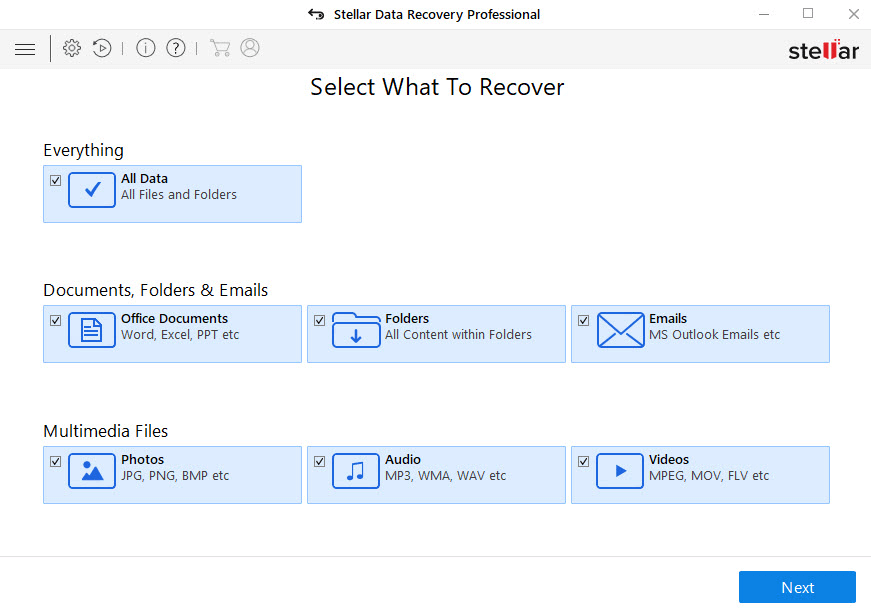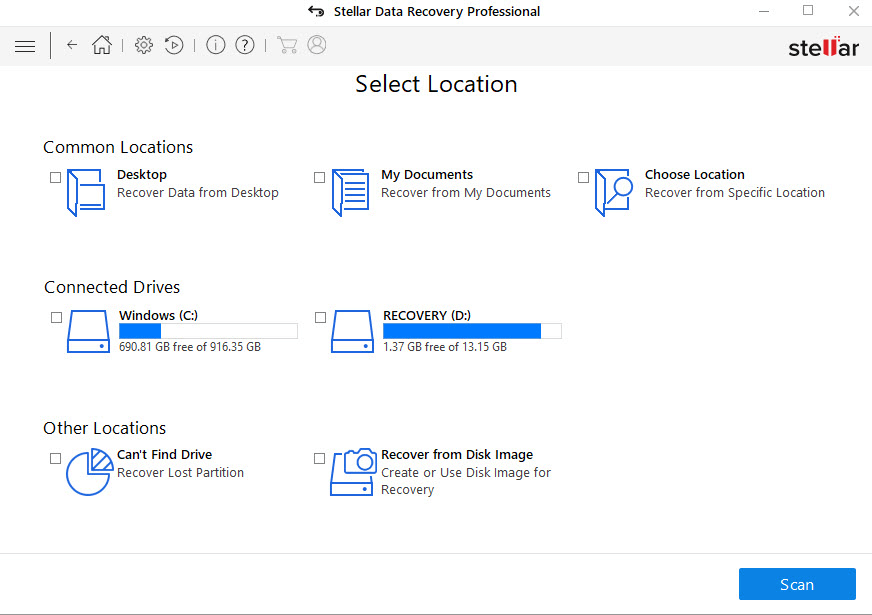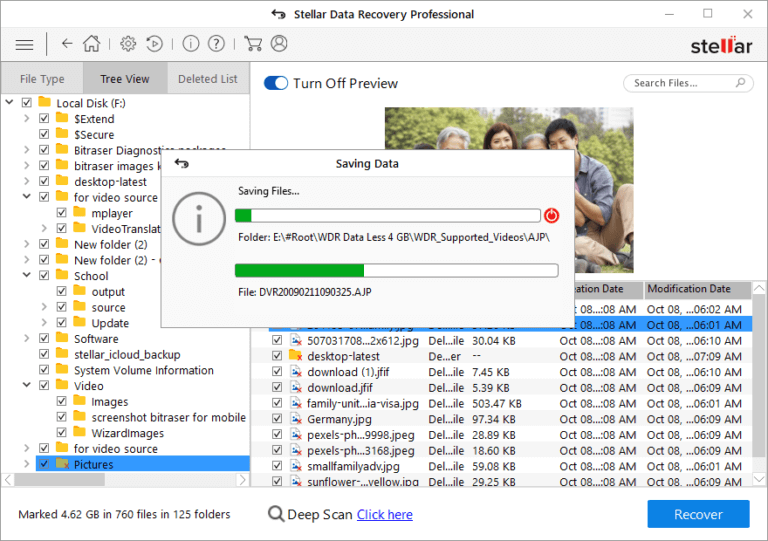How to Recover Deleted Files from Windows 10

Who has not ever struggled with a situation in which you are confident that a file will not be more used and, because of this, you proceed with its deletion? After that, you empty your recycle bin, or permanent deletion happens since you have previously set your system for not keeping any deleted file. But, some days later, you realize that important information was in the dropped-out file. It seems an irreversible situation. The good news is there are many ways to work around this fateful moment. In this article, we will glimpse some native manners to recover deleted files from Windows 10. Moreover, we will discuss a robust third-party software built for this type of recovery – the Stellar Data Recovery.
Command Prompt
Windows 10 counts with some commands that can be carried out to recover deleted files. It requires administrator privileges to run those commands. There are some options to access the command prompt as administrator.
- The first way is by opening the Start menu, typing “cmd” or “command”, right-clicking the result and choosing “Run as administrator”. Windows will ask for permission to launch the prompt command with administrator privilege.
- Another option is by launching the “Run” dialog by pressing Windows+R. After typing “cmd” in the “Open” field, the command prompt will be displayed with administrator privilege by pressing Ctrl+Shift+Enter.
- A last and more straightforward way to access the prompt command as administrator is pressing Windows+X. The operating system will display some advanced options among which “Command Prompt (Admin)” can be selected. This third way can vary on some Windows 10 versions. Users will find the option “Windows PowerShell (Admin)”. This is a more robust command prompt that can also be used for running commands related to data recovery.
Once the prompt command is available with administrator privilege, the first command to be executed is “chkdsk <DRIVE LETTER>: /f”, where <DRIVE LETTER> corresponds to the letter of the hard drive. For example, if the disk is mapped to the letter C, the command to be executed is “chkdsk C: /f”. The command chkdsk checks files and metadata of the file system searching by logical and physical errors. The parameter /f informs the command to fix any errors on the disk.
The second command corresponds to the operation of recovering deleted files. For this, the user must type “attrib -h -r -s /s /d <DRIVER LETTER>: *.*”.

The command attrib shows or changes file attributes. Each parameter passed to it has the following function over each scanned file:
- -h: to remove the “hidden” attribute.
- -r: to remove the “read-only” attribute.
- -s: to remove the “system” attribute.
- /s: to process all files in the current folder and in all sub-folders.
- /d: to include folders in the process.
- *.*: to process files with any name and any extension.
The process can take a considerable time, but it is important to avoid using the system before its completion. Actually, it is a recommendation for any method employed to recover data from Windows 10. This is a way to prevent overriding some recovered files. Moreover, in case some files are rescued in .chk format, it’s just necessary to change the extension for the correct one.
File History
File History is another feature introduced in Windows 8 that offers a simple way to backup and restore files. The crucial point of this alternative is the necessity to set up the backup process previously any recovery. This means that a user will be capable of recovering deleted files from Windows 10 using this way strictly if the backup has been firstly configured. Another important consideration is the fact File History feature was designed to create backups on external drives. Then, to enable this functionality, it’s necessary another volume (disk or media) distinct from that one Windows Operating System is installed in.
Supposing all requirements are fulfilled, the process of recovering deleted files from Windows 10 through File History can be started by accessing the Start Menu and typing “backup”. The restore feature is available on the option “Go to Backup and Restore (Window 7)” followed by “Select another backup to restore files from”. A list of available backup files is shown and the user can pick one and proceed with data recovery.
Stellar Data Recovery
The providers of Stellar Data Recovery claim it is the most tested and awarded software for data recovery. This is endorsed by an extensive list of reviews from technical websites underlined on the website. All of them rate the software from 4 to 5 stars and embrace different features of the tool. Its reputation is also underlined on Trustpilot that ranks the software with a score of 4.7. This punctuation classifies Stellar as “Excellent” considering a spectrum of 1,790 reviews (by the time of article writing).
The software comes with some attributes that can be found in many other solutions for this same purpose. It allows preview files during the recovering process, and it states it is capable of recovering hundreds of file types including database files. Another software capability is related to recovering lost data from a formatted or corrupted media like USB drive, SD card, and a partition on Windows. Extracting deleted data from BitLocker is also a very useful functionality. BitLocker is a disk encryption feature included in some versions of Microsoft Windows. It represents a state-of-the-art design, enhanced with a TPM (Trusted Platform Module) microchip for storing cryptographic keys.
Stellar Data Recovery is distributed through six different versions. The free version has the restriction of recovering up to 1GB of data. The most complete one is a toolkit that contemplates all features of the other versions and two additional functionalities: virtual drive recovery and recovery data from Linux and Mac Drives. A comparison of what exactly each version offers can be found on the following table. Only the paid software editions can run some operations such as recover deleted files from lost partitions, from crashed systems, and repair corrupted videos and photos. In this article, we will concentrate on the Professional edition that can be downloaded through the button:
Prefessional Edition Download Professional Edition Download

The software installation requires a minimum of 4GB of memory and 250MB of hard disk. As robust as it is simple to use, its process of recovering deleted files from Windows 10 demands barely three steps. Firstly, the user is requested to select the type of data to be recovered. Although there is the option to recover all data, it is possible to improve the performance of this process by narrowing the scanning scope.

Next, the software expects the user to select a location from where it should recover deleted files. Three groups of locations are displayed:
- Common locations: It is possible to choose among recovering data from Desktop, from Documents, and from a specific location. In case of selecting the third option, the software opens a new window so that the user can pinpoint the location.
- Connected Drivers: The number of drivers exhibited by the software depends on the devices the system is able to recognize. The most common are local hard disk, SSD, and any other available drivers and volumes. This is the group of options that also offers the possibility to recover data from a lost partition.
- Other locations: This option shall be used for scenarios in which data must be recovered from a disk image.
After choosing a location, the software enables the additional option of carrying out a Deep Scan. This is a more advanced process of searching data based on file signatures. This heavier process is recommended for recovering data from severe corrupted drives.

The third and last step involves triggering the scanning process. While it is running, the preview of several found files are shown on the screen. Whilst the performance of this step depends intrinsically on the volume of data involved, Stellar Data Recovery is capable of completing the analysis of some hundreds of gigabytes in a few minutes.
The software lists all found files after finishing the scanning process. Users have three tabs to visualize data in different ways. Under the tab “File Type”, files are organized according to the type: Photos, Audio, Video, Document, Text, etc. The default tab is “Tree View”, and it displays files using a directory tree structure. The root is the location from where the software started to scan. The third tab is “Deleted List”. By clicking on this tab, the user receives a warning about the execution of a deep scan to search for files and folders deleted from the drive. However, if users agree with running this complementary operation, the software will clear all previous scan results. Another useful feature on this screen is a field for filtering found files. Once the user clicks on a specific file, its preview is shown accordingly. Recovery of a deleted file effectively takes place by clicking on the button “Recover”.

As claimed on the Stellar Data Recovery website, the step-by-step to recover deleted files from Windows 10 is user-friendly and of noticed performance. Nevertheless, once the software constitutes a complete solution for data rescuing, many other functionalities are available. Depending on the expertise of each user, these features can be explored according to the requirements of each scenario.
Prevent Data Loss from Your Windows 10 Computer
A well-awarded solution for data protection is Acronis True Image. This is a complete platform for secure data storage with many products grouped by three scopes. For cloud providers, Acronis True Image supplies several services turned to data backup and protection, and disaster recovery. For on-premise business, there are solutions for a wide spectrum of safe data manipulation including integration with cloud service suppliers. For individuals, the platform offers some solutions focused on protection and integrity of data stored on disks.
These are some options to recover deleted files from Windows 10. Considering the native ways made available by the operating system, they require more expertise from the user to handle command lines and more advanced features of the system. Related to third-party software like Stellar Data Recovery, the basic functionalities offered by them can be found on several other software focused on data recovery. Then, users have at their disposal a range of options that can be chosen according to the specificity of each scenario.



